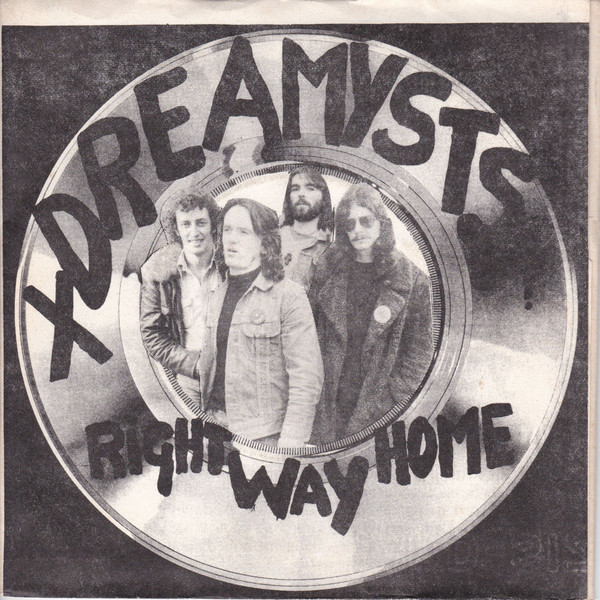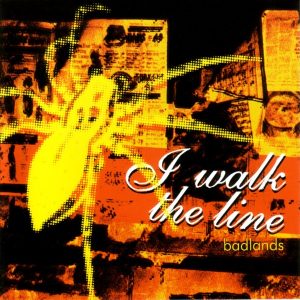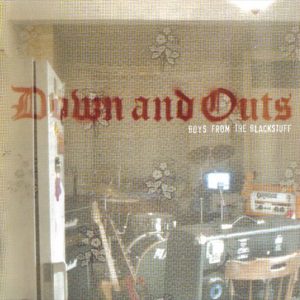Description
The Xdreamysts hailed from the north coast area of N. Ireland and started treading the boards under the name Flying Squad. In the summer of 1977 they changed their name to the Xdreamysts.
An early fan of the band was a guy called Willie Richardson who knew Terri Hooley and it was he who suggested to Terri that he put them on his Good Vibrations record label. The Xdreamysts, who all sported long hair and flared denims, were never a punk band, but they gained a certain amount of credibility among the New Wave fraternity locally when they signed to the Good Vibrations record label who released their debut 45rpm Right Way Home in 1978. Roe Butcher recalls “Our first single ‘Right Way Home’, was knocked out in a few hours and on a few grams of you-know-what. That’s why the songs were so fast in those days!” Drummer Brian ‘Moffy’ Moffatt also has fond memories of their debut experience in a studio ““We went to Wizard Studios in Belfast to record “Right Way Home” which was among one of the first songs we had written. We were met by Davy Wizard (as he became known to us) who owned the studio and he engineered the session. I suppose we produced it ourselves. It was a quick session as I remember. We played the songs live. Recorded the bass and drums and lay guitars and vocals on top. To be brutally honest, we wouldn’t have known the difference between a good studio and a bad one at that point. As long as it sounded all right on the playback monitors, we were happy. In fact if you listen on “Right Way Home” just at the start of Doc’s guitar solo, there is a wee bit of squiggly tape noise. We picked up on it when we heard it on the mix and liked it and decided to keep it in. The whole thing was done in a day but it took ages before it appeared as a single on the label, probably around a year!”
With this new found “credibility” the band began to gig in punk venues including that bastion of punk itself, the Harp Bar. Roe Butcher again “The big difference between us and most of the other bands on Good Vibes is that we’d all left school. And whereas their influences would’ve been bands like the Clash and the Buzzcocks, we were big into the Beatles and the Stones and ’60s psychedelia.”
Their appearance and mix of power-poppin’ catchy rock tunes also enabled them to gain support slots with the likes of Thin Lizzy. They came to the attention of Polydor Records, who signed them along with Protex, after watching both bands perform live in Chesters. Says Roe, “Even though we were from the country and had long hair most of the Belfast punks accepted us, and when Polydor came looking for their token Northern Irish band, the Xdreamysts got signed along with Protex” and went on to play the London gig circuit, strutting their stuff at venues such as the Rock Garden and The Marquee. By this time the Xdreamysts had acquired the services of Carl Leyton-Pope as manager and they went on to release three singles and an album on Polydor. Brian Moffatt recounts the difference between recording with Polydor and Good Vibrations ““Our later studio experiences with Polydor all took place at Olympic Studios in London in Studio 2. At the time we were there The London Philharmonic Orchestra were in studio 1, a place the size of a dancehall. We put doc in there with his amp to get a more live guitar sound! The album was recorded very quickly too. All bass and drums went down in one day and I think about a week for everything else. The Xdreamysts never really got enough time in a studio to become comfortable with recording. We were never afforded the luxury of being given the time to relax with the process. I feel if we had we could have produced something really good. First and foremost, we were a live band, that’s where we were most comfortable”. The album, incidentally, was only ever given a Dutch release, although Good Vibrations did distribute import copies throughout Ireland. Prior to the album’s release, the band had recorded an excellent session for the John Peel show on Radio One.
This is their debut 7″ on Good Vibrations. VG+/VG (the wear and tear on the top of the sleeve, common for all oversized sleeves). Big centerhole.



